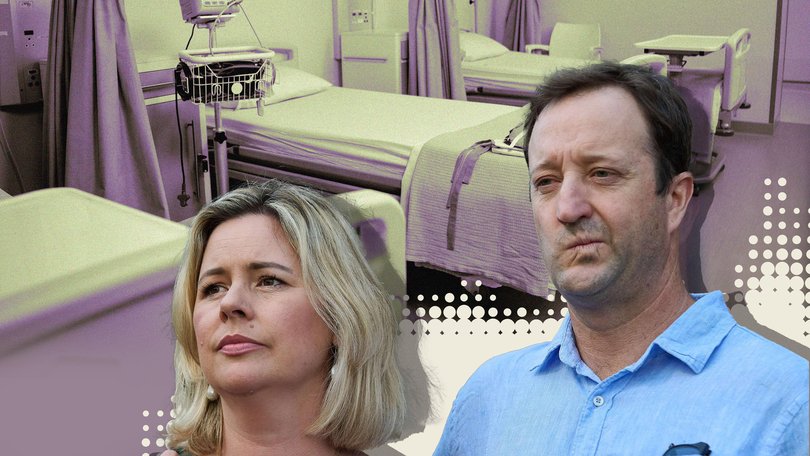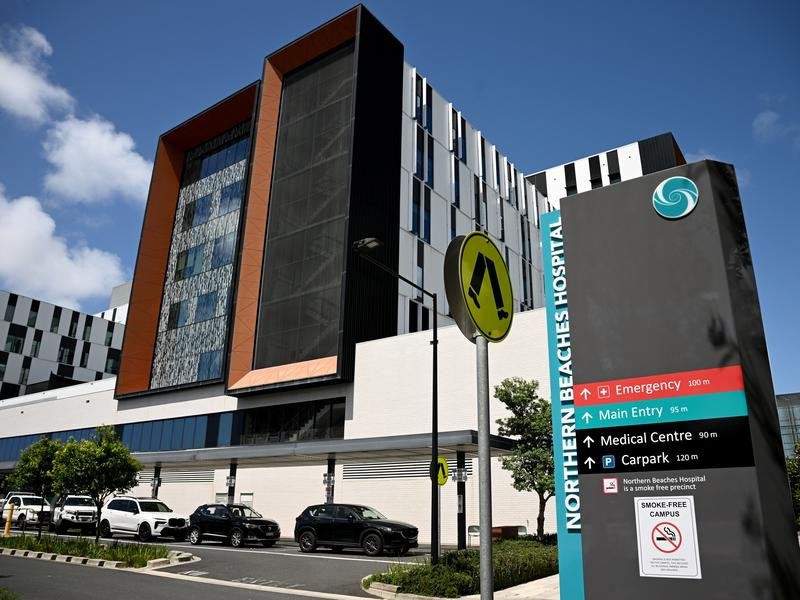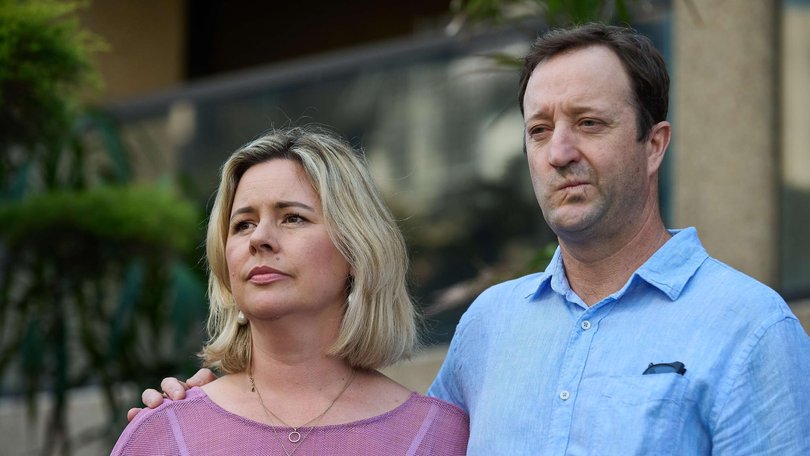AARON PATRICK: Hospital bed glut driving private operators like Healthscope out of business

Ten years ago work began on a $1 billion private hospital designed to provide cutting-edge care for residents of Sydney’s northern beaches from emergency care to cancer treatment.
On Tuesday, the private health experiment ended when the NSW Government disclosed it had agreed to buy the hospital for $190 million from its owner, Healthscope, which was placed in administration five months ago, the corporate equivalent of going bankrupt.
Labor Premier Chris Minns bitterly criticised the previous Coalition government for the “disastrous decision” that allowed a private company to own a hospital that operates an emergency department, which he said was “a basic and fundamental responsibility of governments”.
Sign up to The Nightly's newsletters.
Get the first look at the digital newspaper, curated daily stories and breaking headlines delivered to your inbox.
By continuing you agree to our Terms and Privacy Policy.“This is an experimentation that should never have begun,” he told parliament today. “I’m glad that this parliament has drawn a line underneath it, and we can return this private hospital into government hands. It’s long overdue, but hugely important for the people of New South Wales.”
Federal support
While NSW buys one of the State’s major hospitals, the Federal Labor government is propping up the private system, which it sees as vital for health care. About 70 per cent of elective surgery and one quarter of births take place in private hospitals. Without them, the system would collapse.
Healthscope, which operates 37 hospitals from central Perth to the Gold Coast, failed because of a serious problem few people have heard about: Australian suffers from a hospital glut.

A healthcare building boom has left only 64 per cent of private hospital beds occupied, according to the Grattan Institute, a think tank associated with Melbourne University.
Australians have more hospitals to choose from than ever. At the same time, they are encouraged to spend less time in them. Where safe, health insurers would prefer patients be treated at home, avoiding expensive 24-hour nursing care and the huge rents charged to hospital operators.
Some have even helped set up virtual hospitals, where patients are monitored at home from a central facility manned by doctors and nurses using remote-controlled cameras.
No-growth industry
From a business perspective, hospitals should be a growth industry. The aging population is driving up health spending, which averages around $10,000 per person, or 10 per cent of the whole economy, according to the Australian Institute of Health and Welfare. About 40 per cent of health spending goes on hospitals, which are roughly evenly split between private and government-owned.
Instead of thriving, private hospitals are going broke. Costs are rising faster than revenue and medical unions complain care is suffering. Profit margins across the industry fell from 5.1 per cent in 2020-21 to 0.1 per cent in 2023-24, according to the Federal government.
The profit plunge has hit hospitals across Australia, placing the future of many in doubt. In April, Healthscope closed the North Eastern Rehabilitation Centre in Melbourne, a 46-bed facility that cared for people suffering cardiac, neurological, orthopaedic, respiratory, spinal and trauma injuries and illnesses.
If more hospitals begin to close, the government is worried it will be blamed. Which is one of the reasons why Health Minister Mark Butler told insurance companies — hospitals’ primary funders — last month they needed to direct more money to private hospitals.
“More strenuous efforts by insurers are needed to support the long-term viability of this essential part of our health system,” he said.
Health insurers counter that they are forced to cover the cost of inflated prices of medical devices and high fees for medical specialists.
Poor treatment
While governments, hospitals administrators and insurers argue who is to blame, patients and their relatives worry if they can be certain of getting the best care.
They included Danny and Elouise Massa, whose two-year-old son, Joe, suffered a heart attack while waiting in the Northern Beaches Hospital’s emergency department last year.
Despite suffering from dehydration and a fast heart rate, he was assessed as low-risk. Staff ignored his parents’ request for intravenous fluids and kept him waiting two-and-a-half hours with limited treatment. After the heart attack he was transferred to Sydney Children’s Hospital in Randwick, where he died from brain damage.
Healthscope apologised and acknowledged “unacceptable failings” in his treatment. It was not enough for the Massa family, which began a campaign against private ownership of emergency departments that was supported by the NSW government.

Despite an independent finding that the hospital’s emergency department meets regulatory standards, the State government passed Joe’s Law, which bans private management of emergency medical care in NSW. Accepting the community’s anger over Joe’s death, Healthscope did not fight the law even though it had a contract to run the hospital until 2038.
While nationalising settles the future of Healthscope’s most controversial hospital, the fate of the other 36 may hinge on landlords. Healthscope, which was bought by a Canadian fund manager in 2019 for $4 billion, is saddled with $1.6 billion debt.
The owner sold the buildings and land used by its hospitals to real-estate investors, which were promised stable, long-term returns.
Looking for savings
The advisory firm now running the hospitals, McGrathNicol, is trying to negotiate cheaper rents. The landlords don’t see why they should take losses just because the hospitals are no longer profitable.
Staff, too, are expected to make sacrifices. Last month Healthscope chief executive Tino La Spina asked his 19,000 employees to accept changes to the way their pay is structured to make it easier to convert Healthscope into a charity. Charitable hospitals pay less payroll tax. Mr La Spina called it the “For Purpose” plan.
“As things stand in the sale process, there is no offer to buy Healthscope as a whole,” Mr La Spina wrote to staff. “Some hospitals have received significant interest while others have received no meaningful interest.
“This means that Healthscope would be broken up, with hospitals sold to a mix of for-profit and not-for-profit buyers. Some hospitals could be stranded without a buyer. Our For Purpose proposal is a compelling alternative to this scenario.”
A Healthscope spokesman did not return a call on Tuesday. Bids for the business are due next month.

